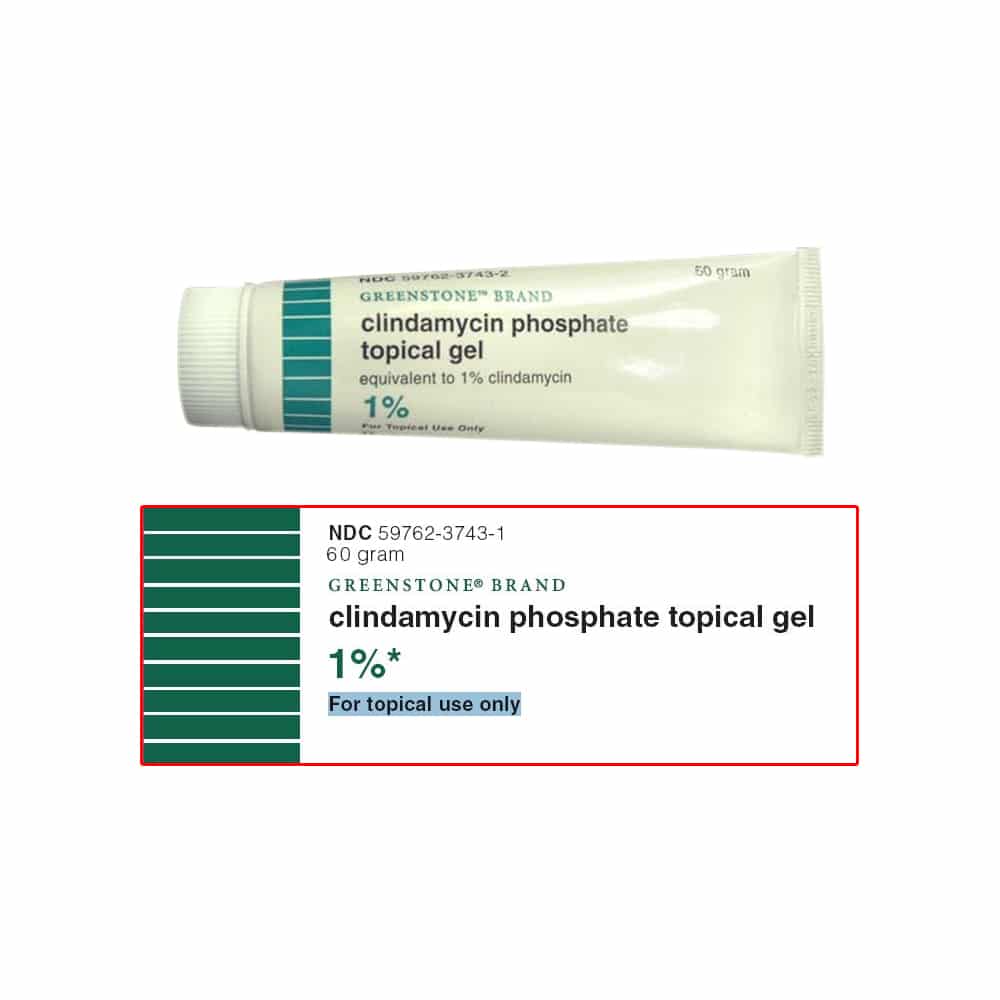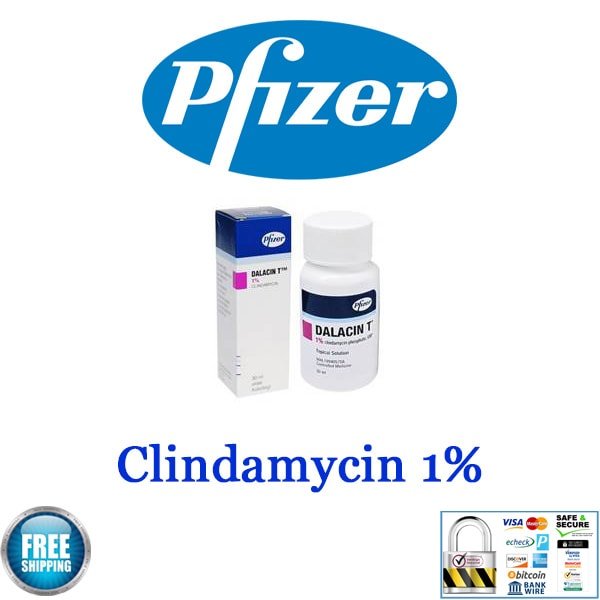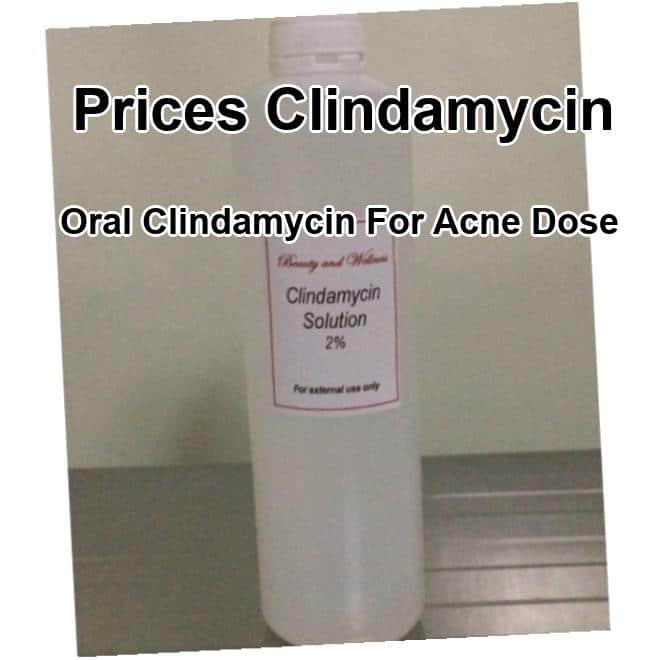Controversies In Use Of Antibiotics For Acne
Antibiotics are moderately effective for acne and are frequently used for acne treatment. They are often prescribed for months or years, because acne is a chronic skin condition. However, many physicians are concerned about the use of antibiotics for acne, mainly because of reports of increasing rates of bacterial resistance to antibiotics.
Bacterial resistance and serious infections including cellulitis, pneumonia, tuberculosis and diarrhoeal illnesses are a global threat. New, more expensive antibiotics are often less well tolerated than older agents and are unavailable in many countries. Very few new antibiotics are being discovered or brought to market.
What Is Clindamycin And How Does It Treat Acne
Clindamycin phosphate is an antibiotic that is typically used to fight a bacterial infection. You can find clindamycin phosphate in a topical form or as oral clindamycin medication. Antibiotic therapy is usually recommended for infections caused by bacteria, but antibiotic medicine can actually benefit inflammatory breakouts too!
Our dermatologists may recommend an oral antibiotic like doxycycline as a treatment for severe acne. This helps to kickstart acne treatment, but they, unfortunately, cannot be used long-term. However, topical antibiotics can be used to safely keep acne under control long-term.
Topical clindamycin for acne is typically used as a topical antibiotic to calm inflammation and reduce an acne causing bacterium called Cutibacterium acnes. It helps to calm inflammatory acne lesions and can also mildly improve non inflammatory lesions like blackheads.
What Should I Tell My Ro Derm
- Its important to tell your Ro Derm-affiliated provider all of the topical as well as oral medications you are currently using, including prescription, over-the-counter medications, vitamins, and herbal and dietary supplements, even if you think they are unrelated to the skin condition being treated.
- Tretinoin can make your skin more sensitive to the sun and can cause drying and peeling.
- Using tretinoin with other topical drying agents can increase the drying effects of tretinoin. Some topical medications to watch out for include salicylic acid, sulfur, and resorcinol
- Some common oral medications that can make your skin more sensitive to the sun, including certain antibiotics and blood pressure medications, might exacerbate any sun sensitivity resulting from tretinoin use.
Withholding or providing inaccurate information about your health and medical history in order to obtain treatment may result in harm, including, in some cases, death.
Don’t Miss: Antibiotic Cream For Nail Infection
Are There Any Side Effects To Using Clindamycin
Although clindamycin is an FDA-approved acne treatment, all antibiotics do have the potential to cause side effects.
Some of the most common side effects of clindamycin include:
- Dry and/or peeling skin
- Slight burning or redness
Remember, clindamycin is generally well-tolerated among users and rarely causes any serious side effects.
At Nava MD, we specialize in creating personalized treatment plans based on each patients unique needs and sensitivities.
This allows you to use trusted ingredients of variable strengths to suit your skin type and ensure that you have little to no side effects.
If you have any questions or concerns about your personalized skincare treatment, one of our expert clinicians is easily contactable through our Patient Portal.
How Does Clindamycin For Acne Work

Clindamycin is an antibiotic that kills certain types of bacteria or stops them from growing.
Doctors may prescribe this to kill Propionibacterium acnes bacteria that can lead to pimples. While P. acnes bacteria naturally live on the skin, they can invade pores and cause inflammation that leads to acne.
According to a
- topical antibiotics, such as erythromycin or clindamycin
- topical retinoids, such as adapalene or tretinoin
Your doctor may recommend using benzoyl peroxide and a topical antibiotic, or a topical retinoid and a topical antibiotic. There are several options of combinations, and they depend upon what acne types you have.
Several studies exist to support these combinations or the use of topical clindamycin.
Topical 1 percent clindamycin was shown to reduce acne in people with moderate inflammatory acne after 8 weeks of twice daily treatment, according to a 2013 study .
Another 2019 study found that applying a combination of clindamycin and tretinoin for 12 weeks helped reduce the appearance of acne with minimal side effects.
Don’t Miss: Should I Take An Antibiotic For Bronchitis
How Long Does It Take For Clindamycin To Work
Like most topical treatments, it can take anywhere from 8-12 weeks to start seeing results. Staying consistent with your skincare routine will help ensure you’re getting the best progress.
You may experience purging if clindamycin is used alongside tretinoin, but clindamycin helps to reduce inflamed acne through this phase.
What is purging? It’s a process where your skin is bringing dead skin cells and excess sebum to the surface of the skin. This can make it seem like you’re experiencing more breakouts when first starting out on treatment. This typically takes a few weeks to a few months to pass, but healthier skin is on the other side!
Who Should Not Use Tretinoin
Do not use tretinoin if:
- You are allergic to tretinoin.
- You are pregnant or breastfeeding, you are trying to get pregnant, or you are unsure whether you are pregnant. When prescribed as an oral medication, tretinoin was associated with miscarriage and birth defects. While there is inconclusive evidence that tretinoin applied topically can cause miscarriage or birth defects, it is best to be cautious. Tretinoin should be used during pregnancy only if the potential benefit justifies the potential risk to the fetus.
Also Check: Is Strep Throat Treated With Antibiotics
How Long Can You Take Antibiotics For Acne
Take an antibiotic for the shortest time possible When including an antibiotic in your acne treatment plan, your dermatologist will prescribe it for the shortest time possible. Because acne takes time to treat, this usually means three to four months. However, some people who have acne need more time on an antibiotic.
What Should I Tell My Care Team Before I Take This Medication
They need to know if you have any of these conditions:
- Inflammatory bowel disease such as Crohn’s disease or ulcerative colitis
- Large area of burned or damaged skin
- Other skin conditions or sensitivity
- Stomach or intestine problems like colitis
- An unusual or allergic reaction to clindamycin, other medications, foods, dyes, or preservatives
- Pregnant or trying to get pregnant
Recommended Reading: Ophthalmic Antibiotic Ointment For Dogs
Data Collection And Analysis
For standardisation of data collection and analysis, some parts of the methods section of this protocol use text that was originally published in the Cochrane Handbook for Systematic Reviews of Interventions .
Selection of studies
After removal of duplicates, two independent authors, MG and CL, will screen the titles and abstracts identified in the initial search results to decide which trials are eligible for inclusion. If it is not clear from the title or abstract, or in case the study meets our inclusion criteria, we will retrieve the full text of the paper. The authors will independently read and analyse the full text of each study in order to confirm if it meets the predefined inclusion criteria. We will resolve any disagreement in study assessment by referring to a third author . We will record the reasons for exclusion of the read fulltext papers in the ‘Characteristics of excluded studies’ tables.
Data extraction and management
Assessment of risk of bias in included studies
Two authors, MG and CL, will independently assess the risk of bias of the eligible studies, using the following criteria suggested in the Cochrane Handbook for Systematic Reviews of Interventions . A third author will resolve disagreements. We will record the results in the ‘Risk of bias’ tables within the ‘Characteristics of included studies’ tables, according to the following categories of bias.
Selection bias
Performance bias
Detection bias
Attrition bias
Reporting bias
Other bias
How Does Clindamycin Work
Although bacteria doesnt cause acne directly, it plays a key role in making acne such a major problem for many people.
Clindamycin helps to reduce the severity of acne by taking certain types of bacteria, such as P. acnes, out of the equation.
As an antibiotic, clindamycin is either bacteriostatic or bactericidal .
These effects allow clindamycin to stop bacteria from growing inside your pores and causing inflammation.
Its important to understand that clindamycin doesnt appear to lower your sebum production or stop dead skin cells from building up on the surface of your skin.
For this reason, its not always the best treatment for mild, non-inflamed forms of acne, such as whiteheads or blackheads.
However, if you have inflamed, infected acne, clindamycin is a reliable, effective antibiotic thats perfect for bringing P. acnes and other types of bacteria under control.
Also Check: Single Dose Antibiotic For Uti
Appendix 2 Medline Search Strategy
1. exp Acne Vulgaris/ 2. acne$.ti,ab. 3. 1 or 2 4. Dapsone/ 5. Erythromycin/ 6. exp AntiBacterial Agents/ 7. Tetracycline/ 8. .ti,ab. 9. or/48 10. .ti,ab. 11. Ointments/ or Gels/ 12. administration, topical/ or administration, cutaneous/ 13. .ti,ab. 14. or/1013 15. 9 and 14 16. topical antibiotic$.ti,ab. 17. Clindamycin/ 18. Metronidazole/ 19. .ti,ab. 20. aminoglycosides/ or gentamicins/ 21. Neomycin/ 22. .ti,ab. 23. Macrolides/ 24. Sulfacetamide/ 25. sulfonamide antibiotic$.ti,ab. 26. meclocycline$.ti,ab. 27. Lincoside$.ti,ab. 28. Quinolones/ 29. Quinolone$.ti,ab. 30. Chloramphenicol/ 31. Chloramphenicol.ti,ab. 32. Fusidic Acid/ 33. Fusidic acid$.ti,ab. 34. Nitromidazole.ti,ab. 35. Mupirocin/ 36. mupirocin$.ti,ab. 37. bactroban.ti,ab. 38. pseudomonic acid$.ti,ab. 39. Pleuromutilin.ti,ab. 40. retapamulin.ti,ab. 41. Polypetide$.ti,ab. 42. Bacitracin/ 43. bacitracin.ti,ab. 44. Polymyxins/ 45. polymyxin$.ti,ab. 46. or/1645 47. 15 or 46 48. randomized controlled trial.pt. 49. controlled clinical trial.pt. 50. randomized.ab. 51. placebo.ab. 52. clinical trials as topic.sh. 53. randomly.ab. 54. trial.ti. 55. 48 or 49 or 50 or 51 or 52 or 53 or 54 56. exp animals/ not humans.sh. 57. 55 not 56 58. 3 and 47 and 57
Can I Use Topical Clindamycin Forever

Topical clindamycin will not cure your acne. However, to help keep your acne under control, keep using this medicine for the full time of treatment, even if your symptoms begin to clear up after a few days. You may have to continue using this medicine every day for months or even longer in some cases.
Also Check: Can A Uti Be Cleared Without Antibiotics
To Use The Gel Follow These Steps:
Topical Antibiotics For Acne
Since they are applied directly to the skin, topical antibiotics work by accumulating in follicles to target and destroy bacteria, and provide anti-inflammatory effects.
Numerous topical antibiotics are available including creams, gels, lotions, solution, medicated wipes and foams. They are typically recommended for mild acne, but can also be effective for treating severe acne when combined with other acne treatments.
Clindamycin and erythromycin are the most commonly used topical acne antibiotics. Other options include dapsone and sulfacetamide.
Recommended Reading: Antibiotics For Animals Tractor Supply
Other Medications For Treating Acne
Clindamycin is an effective medication that can reduce inflammation and clear up even the most stubborn acne breakouts. However, its far from the only treatment thats available for acne.
If you have severe or persistent acne breakouts, your healthcare provider may recommend that you use clindamycin with one or several of the following medications:
Oral Antibiotics For Acne
Oral antibiotics work systemically. This means that instead of being applied directly to lesions, they are ingested and absorbed by the blood and carried to where bacteria have accumulated.
Since the entire body is exposed to oral antibiotics, theyre more likely to cause side effects. For this reason, dermatologists reserve them for more severe forms of acne.
Oral antibiotics should be combined with topical retinoids and benzoyl peroxide to increase effectiveness of the antibiotic and decrease the risk of bacterial resistance.
The oral antibiotics most often prescribed for acne treatment are macrolides and tetracyclines.
Read Also: Can Bronchitis Be Treated With Antibiotics
Description Of The Condition
Acne is a multifactorial inflammatory skin disease affecting 70% to 90% of individuals from the age of 12 to 24 years . Although acne is classically a selflimiting disease of adolescence, evidence suggests it is occurring at earlier stages of puberty and is also lasting longer . It is currently considered a chronic disease . Persistent acne beyond teenage years is more common in women than men and may be associated with hormonal imbalances .
Acne is centred around the pilosebaceous unit . Therefore, acne is predominantly located in areas rich in sebaceous follicles, such as the face, back, and chest . It is a polymorphic disease that can present with open and closed comedones , inflammatory lesions , and subsequent atrophic or hypertrophic scars .
Clinical forms of acne, classified by the predominant type of lesions, include comedonal acne, papulopustular acne, and nodular or conglobate acne. For research purposes, lesions may be further categorised into inflamed and noninflamed , and the number of lesions per patient is counted and documented . Many clinical trials also capture global assessments including patient perspectives .
How Do I Use Clindamycin For Acne
Your doctor will prescribe topical clindamycin, typically for twice daily application. Different preparations are available.
Some preparations, like topical foams, may contain alcohol and sting or burn when applied to the skin. Youll usually apply the foam to a cleansed face with clean hands to all areas where you experience acne blemishes.
Dont discontinue using clindamycin if you start to see results. Completing a full course of antibiotics ensures that the clindamycin kills off most of the bacteria. Stopping too early can increase your risk for antibiotic resistance.
Doctors usually intend for antibiotics like clindamycin to be used as shorter-term treatments. Youll usually apply them for 3 to 4 months along with benzoyl peroxide, and sometimes a retinoid as well.
After this time, your doctor may recommend that you stop using topical clindamycin but continue using other topical preparations, such as benzoyl peroxide or retinoids.
Most of the time, if you have a reaction to the topical application, you can either apply less of the clindamycin or discontinue its use.
Topical clindamycin is a Pregnancy Category B drug. This means its largely safe for use during pregnancy. Research hasnt revealed its harmful during pregnancy.
But you should always talk to your doctor about all topical and prescription medications youre taking to ensure theyre safe during your pregnancy.
Recommended Reading: How Do I Get Antibiotics Without Insurance
Ps We Did The Homework So You Dont Have To:
Nicole Hangsterfer is a licensed physician assistant at Curology. She obtained her masters in physician assistant studies at the Feinberg School of Medicine at Northwestern in Chicago, IL.
This article was originally published on August 11, 2022, and updated on November 9, 2022.
* Subject to consultation. Subscription is required. Trial is 30 days. Results may vary.
Our medical review process:
Clindamycin Phosphate 12% And Benzoyl Peroxide 375% In Women

Unlike males who typically outgrow acne with time, a subset of female patients may experience acne into adulthood, and this may include as much as half of all adult females between the ages of 2029 years.36,37 In this subset of patients, hormonal dysregularities such as polycystic ovarian syndrome and hyperandrogenism are more common.36 For this reason, these patients tend to not respond as robustly to standard acne treatments, and gynecological follow-up is often required. It is generally accepted that acne in adult females typically presents as mild-to-moderate inflammatory acne that is usually limited to the jawline, chin, and neck, otherwise known as the U-zone.36,37 However, in a recent large-scale international study, researchers found that almost 90% of women with acne did not have it limited to the U-zone, and a mixed inflammatory and noninflammatory acne was the most common presentation.38 These results suggested that the presentation of facial acne in adult females might be more similar to adolescent acne than once believed.
Recommended Reading: What Is The Best Antibiotic For Sti
What Do The Studies Say About Topical Clindamycin
Now that you know what clindamycin is, let’s talk about what the studies say:
“Clindamycin 1% significantly reduced inflammatory and non-inflammatory lesions at week 12.” – Archives of Dermatology
“Clindamycin 1% significantly reduced papules and pustules compared to vehicle at week 8.” – Archives of Dermatology
Clindamycin phosphate can be used to treat a variety of different, from papules and pustules to inflamed or comedonal acne. Clindamycin topical treatment is able to effectively reduce mild to moderate acne on its own. However, it is even more effective when combined with other acne-fighting ingredients like benzoyl peroxide or tretinoin.
“Clindamycin combined with benzoyl peroxide was more effective than clindamycin alone at reducing acne.” – Journal of Cutaneous Medicine and Surgery
While clindamycin can effectively treat mild or moderate breakouts, combining it with other acne treatments can help treat more severe acne.
Combination Acne Medications Give You A Two
There are some acne treatments available that combine topical antibiotics with another acne treatment in one medication. These combination acne medications aren’t necessarily any more effective than using the medications separately. The benefit is they streamline your acne treatment routine. A drawback, though, is that they can be pricey compared to some other acne medications.
Some of available combination medications are:
Depending on your skin, one of these might be a good fit for you. Again, your dermatologist will help create the best treatment plan.
You May Like: Yeast Infection From Antibiotics Symptoms